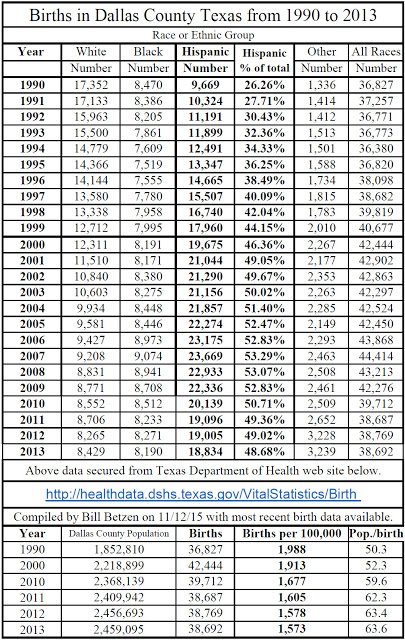Testimony for 12-14-16 Dallas ISD Board Meeting on planned study of District of Innovation alternatives for DISD:
President Micciche, Honorable Board, Dr. Hinojosa,
President Micciche, Honorable Board, Dr. Hinojosa,
First,
everything I say now is already posted, in much more detail with links to data, in
the blog at www.StudentMotivation.org. (That is this blog you are now reading.)
Second, congratulations on the brilliant Highland Hills Library presentation of Dallas ISD to the community along with the International Leadership Texas schools, last night.
Mr. Conger of ILT was brilliant and is formidable competition. There was no Q and A. Therefore, after the presentations I went to Mr. Conger to ask about his 36% teacher turnover and teacher tenure of only 2.2 years. When he heard my name he asked if I did an education blog. I verified that. He said he used the K-8 research I had collected in the February 2012 posting (http://schoolarchiveproject.blogspot.com/2012/02/separate-middle-schools-vs-k-8.html) in designing his schools on the k-8 feeder pattern model. He was very thankful.
I wish DISD was more actively working toward a Pk-8 centered configuration for all feeder patterns such as ILT. Without that, the Eddie Congers of the world will fragment and take over Dallas education, and students will not gain! (http://schoolarchiveproject.blogspot.com/2012/02/why-dallas-should-say-no-thanks-to.html)
Mr. Conger of ILT was brilliant and is formidable competition. There was no Q and A. Therefore, after the presentations I went to Mr. Conger to ask about his 36% teacher turnover and teacher tenure of only 2.2 years. When he heard my name he asked if I did an education blog. I verified that. He said he used the K-8 research I had collected in the February 2012 posting (http://schoolarchiveproject.blogspot.com/2012/02/separate-middle-schools-vs-k-8.html) in designing his schools on the k-8 feeder pattern model. He was very thankful.
I wish DISD was more actively working toward a Pk-8 centered configuration for all feeder patterns such as ILT. Without that, the Eddie Congers of the world will fragment and take over Dallas education, and students will not gain! (http://schoolarchiveproject.blogspot.com/2012/02/why-dallas-should-say-no-thanks-to.html)
I am here to speak against the District of Innovation model. Please do not waste valuable board time in this consideration. Mike Morath was correct when he said that not enough time is spent in board meetings discussing student achievement. DOI is not an alternative that any research shows will help student achievement. (See more on this at https://www.atpe.org/en/DOI and http://kut.org/post/why-are-some-central-texas-schools-resistant-districts-innovation) DOI is only 18 months old! Even the two changes DISD is considering with this DOI proposal have no research to back them up. Plus, they are changes to standards that all 1,200 districts in Texas are working under. If they are truly valuable changes, this needs research, and then a statewide legislative change.
Now to invest time on student achievement. You know I have been working for over 12 years with the Time Capsule Project. The two oldest Time Capsule Project middle schools now have the highest SEI average over the past three years of all 31 DISD middle schools. The next 5 Time Capsule Project schools over 3 years old have gained an average of 6.7 points in their SEI during those last three years. The remaining 24 middle schools in DISD have seen their average SEI fall 0.7 of a point during these same three years. Are we a data-centered district?
This project to date has cost DISD nothing beyond paper, pencil, and postage. The vaults were all donated. It is easy to find such donors.
We have struggled since 2009 trying to get parents to write a letter to their child about their dreams for them. This has resulted in priceless letters, but they are written to only about 30% of students. This past May, instead of a letter from the principal, we experimented with students writing these request letters to their parents asking for that priceless letter back themselves about their parents dreams for them. The results were dramatic! In several classes as many as 85% of parents responded! Numbers almost tripled! Parents responded directly to their children!
(See documentation in recent blogs below.)
(See documentation in recent blogs below.)
Since May it has been recommended to all 11 Time Capsule Project schools to expanded to all grades writing letters each year. Year old letters are returned each year to be read before new letters are written. Only the letters written in the final grade of a school (5th, 8th or 12th) are letters planning 10 years into the future, and are the only letters that remain in the vault a decade. Now Time Capsule Projects are starting in elementary schools.
With these improvements, and that significantly higher level of parental involvement annually, the SEI scores will rise much more rapidly at the 5 additional Time Capsule Project Schools now in development, as well as the 11 other already high performing Time Capsule Project Schools.
This is how we need to spend more of our time at DISD Board meetings, not in discussing things like Home Rule and DOI!













